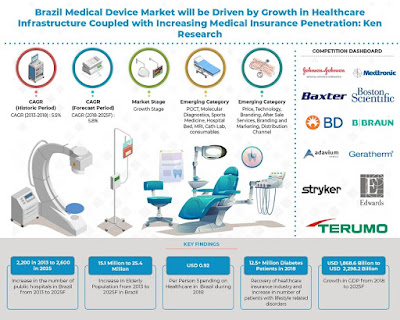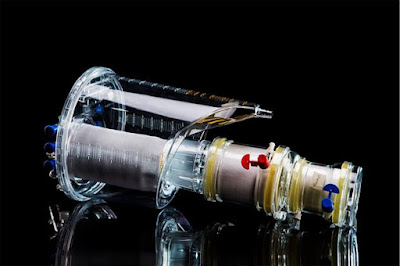The report titled “India Ed-Tech Driven Career Programs Market Outlook to 2025 – Increasing Technological Capabilities of Ed-Tech Companies to Increase Program Enrolments and Spend in Future” provides a comprehensive analysis of the adoption of Ed-Tech in the higher and professional education segment within India. The report covers all various aspects including introduction and overview, demand & supply ecosystem, need for alternate education, target audience analysis through survey, industry size on the basis of enrollments & spend, market segmentation by type of program, operating models, revenue models, technological capabilities of Ed-Tech players, marketing models, team structure of Ed-Tech players, competitive landscape, trends and developments, emerging course and revenue models in the industry. The report concludes with market projections for the future of the industry including forecasted industry size by enrollment and by spend.
India Ed-Tech Driven Career Programs Market Overview and Size:
The market was observed in its growth stage majorly due to the fact that India has a large working population which is leading the demand for up-skilling & re-skilling programs provided by Ed-tech companies. Also, minimal restrictions on competitive entry allow the entry/presence of numerous players operating on a SPOC model, therefore, catering to working professionals, primarily. Government initiatives aimed at increasing the Gross Enrollment Ratio have also played a major role in increasing the adoption of online skilling and vocational training programs. For instance, the government allocated around INR 17,000 crores towards skill-based development and employment generation in India.
India Ed-Tech Driven Career Programs Market Segmentation
By Type of Course (UG, PG, MDP, and B2B): MDP programs were witnessed to dominate the industry in terms of enrollment as professional up-skilling programs for executives led the industry. Whereas in terms of program spend, PG programs edged MDP programs due to the comparatively higher batch size of PG programs as compared to MDP programs in India.
India Higher Education Market Segmentation by the Type of Course (UG, PG, Diploma Integrated and Certificate Programs): UG programs dominated the higher education segment due to the high number of institutions, colleges, and universities for higher education in the country. The Gross Enrolment Ratio for overall higher education was measured at 26.3%in India during the year 2019.
Competitive Landscape of Major Players Operating in the India Ed-Tech Driven Career Programs Market:
Competition stage within the Indian Ed-Tech market was observed to be highly fragmented with the presence of major players such as upGrad, Talentedge, SimpliLearn, Talent Sprint, Great Learning, Edureka, NIIT and others who captured a substantial share in terms of student enrolment in 2018-2019. Ed-Tech companies in India were observed to compete on the basis of course quality, program delivery modes, doubt clearance, instructor experience, pricing, student support & tech interface.
India Ed-Tech Driven Career Programs Market Future Outlook & Projections:
The market is expected to grow at a high rate in the future, with working professionals turning to Ed-tech powered up-skilling as well as re-skilling programs in order to learn on-the-go. Also, high job change rates, lay-off rates, risk of getting unemployed by developing technologies and lack of workplace learning opportunities will heighten the adoption of uptake of Ed-tech powered online programs. Moreover, the graduate & college segment is predicted to surge in the future due to favorable government judgments and the need for placement focused programs for college students.
Key Segments Covered:-
By Ed-Tech Driven Higher & Professional Education Program Segment
UG
PG
MDP
B2B
By Higher Education Course Segment
UG
PG
Diploma
Integrated
Certificate
Key Target Audience
Ed-Tech Companies
Independent Investors
Venture Capital Firms
Universities
Corporate Training Companies
Government Ministries
Time Period Captured in the Report:
Historical Period – 2013-2019
Forecast Period – 2019-2025
Companies Covered in Report:
upGrad
Talentedge
SimpliLearn
Talent Sprint
Great Learning
Eruditus & Emeritus
Northwest Executive Education
Hughes Global Education
VC Now
2U
Trilogy Education Services
Others (NIIT, Intellipaat, Imarticus Learning, Times Professional Learning, NuLearn, Edureka, EduKyu, Jigsaw Academy, Analytics Vidhya, Aptus Learn & Verzeo)
Key Topics Covered in the Report:-
Target Addressable Audience for Higher & Professional Education Programs (2013-2019)
Training Spend by Employee/Fresher or Employer
Government Initiatives to Bridge Skill Gap
India Ed-Tech Driven Higher & Professional Education Programs Industry Size- By Enrolment & Spend (2019-2025)
Target Audience Analysis Survey
Supply Side Ecosystem- Career Driven Programs
Ed-Tech Driven Career Program Ecosystem
University Ed-tech Partnership Analysis
Program Domains Targeted by Ed-Tech Players
Operating Model Analysis
Tech Capabilities & Program Delivery Analysis
Revenue Streams
Marketing Models with Ideal Cost Allocations
Team Structure Analysis
Challenges faced by Ed-Tech Players
Competitive Landscape
Company Profiles of Major Players
Competition Side Target Audience Survey
International Success Case Studies
Favorable Tax Saving Destinations
Future Industry Outlook to 2025
Emerging Revenue & Course Models
For More Information On The Research Report, Refer To Below Link:-
Related Reports by Ken Research:-
Contact Us:-
Ken Research
Ankur Gupta, Head Marketing & Communications
Ankur@kenresearch.com
+91-9015378249
Ken Research
Ankur Gupta, Head Marketing & Communications
Ankur@kenresearch.com
+91-9015378249







